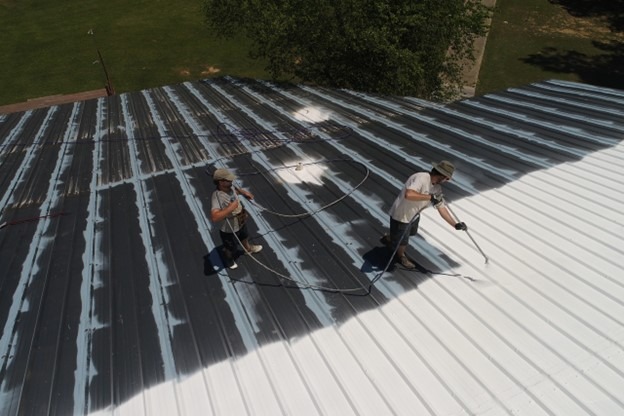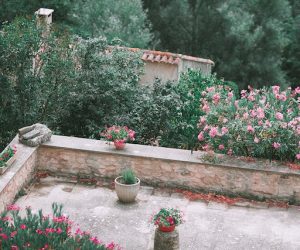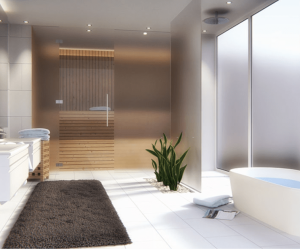
Your roof is your home or business’s first line of defense against the elements, and it plays a crucial role in protecting your investment. However, over time, roofs can face wear and tear, leading to costly repairs or even replacement. The good news is that there are steps you can take to extend the lifespan of both residential and commercial roofs, saving you money and headaches in the long run.
In this blog post, we’ll explore some practical strategies that can help you ensure your roof stands the test of time. From routine maintenance to smart upgrades, we’ll show you how to make your roof last longer and look better doing it.
Extend the lifespan of your residential or commercial roof by incorporating professional roof cleaning services in Puyallup, ensuring a well-maintained and durable roofing system for years to come.
Coating and Sealing
Coating and sealing the roof’s surface is a proactive strategy to enhance its longevity and resilience. Roof coatings, often made of materials like silicone or elastomeric compounds, create a protective barrier that shields the roofing materials from UV rays, extreme temperatures, and moisture infiltration. Silicone coatings are highly durable, flexible, and resistant to cracking, making them ideal for various roofing materials.
Additionally, they can enhance a roof’s energy efficiency by reflecting sunlight and reducing heat absorption, leading to potential energy savings. Costing around $5-$8 per square foot, silicone roof coatings can significantly prolong the life of your roof while minimizing maintenance and repair costs. This makes them a valuable investment for roof longevity and performance.
Regular Inspections
Regular roof inspections are a cornerstone of proactive roof maintenance. These routine assessments, typically conducted at least twice a year, allow homeowners and property managers to catch issues early before they escalate into costly problems. During inspections, roofing professionals or homeowners can identify common issues such as missing or damaged shingles, cracked flashing, or signs of water infiltration.
Detecting these problems in their infancy enables timely repairs and prevents them from causing extensive damage to the roof structure or interior of the building. With proper attention and care, regular inspections play a vital role in maximizing the lifespan of residential and commercial roofs while minimizing repair expenses.
Quality Materials
The choice of roofing materials is a pivotal factor in determining the longevity and resilience of both residential and commercial roofs. Opting for high-quality roofing materials is paramount for ensuring a roof’s extended lifespan. Durable materials, such as asphalt shingles, metal, or tile, are better equipped to withstand the rigors of various climates and environmental conditions.
They resist wear and tear, moisture, and UV exposure, ensuring the roof’s structural integrity over the years. Investing in superior materials not only fortifies a roof’s ability to withstand the elements but also minimizes the frequency of replacements and repairs, ultimately saving property owners money in the long run while delivering long-lasting protection.
Proper Installation
The importance of proper roof installation cannot be overstated when aiming for a long-lasting and trouble-free roofing system. Expertise and precision during the installation process are essential to ensure that all components are correctly fitted and sealed. By enlisting experienced roofing professionals, property owners can avoid common installation errors that might compromise the roof’s integrity.
Improperly installed roofs are more susceptible to leaks, damage, and premature wear and tear. Conversely, when installed correctly, a roof can perform optimally for its intended lifespan, saving both time and money that would otherwise be spent on repairs and replacements. Choosing skilled installers is an investment in the roof’s longevity and performance.
Adequate Ventilation
Adequate ventilation is a critical element in the quest to extend the lifespan of residential and commercial roofs. Proper ventilation helps regulate temperature and moisture levels in the attic or under the roof deck, preventing the buildup of excess heat and humidity. Without this ventilation, trapped moisture can lead to rot, mold, and premature deterioration of roofing materials.
Furthermore, excessive heat can accelerate the aging of shingles and other components. By ensuring your roof has sufficient ventilation, you create an environment that promotes durability and longevity, reducing the risk of structural damage and the need for costly repairs or replacements down the road.
Regular Cleaning
Regular roof cleaning is a crucial aspect of roof maintenance that can significantly impact its longevity. Removing debris, leaves, moss, and other accumulations from the roof’s surface is essential in preventing water retention and structural damage. Clogged gutters and downspouts can impede proper drainage, leading to water infiltration and potential leaks.
Moss and algae growth can also degrade roofing materials over time. By scheduling routine cleanings, homeowners and property managers can extend the life of their roofs and maintain their aesthetic appeal. Clearing the way for effective water drainage and minimizing the presence of damaging elements can prevent costly repairs and ensure the roof’s durability.
Repairs and Maintenance
Timely repairs and proactive maintenance are paramount in preserving the integrity and longevity of residential and commercial roofs. Small issues, if left unaddressed, can escalate into major problems that necessitate costly and extensive repairs. Regularly inspecting the roof and promptly addressing concerns such as leaks, damaged shingles, or deteriorating flashing can prevent these issues from becoming more severe.
Maintenance tasks may include resealing seams, recaulking flashing, or replacing individual damaged components. By prioritizing repairs and maintenance, property owners not only protect their investment but also extend the life of their roof, ensuring its continued ability to provide shelter and protection against the elements.

Storm Preparedness
In regions prone to severe weather, storm preparedness is essential to ensure the longevity of residential and commercial roofs. Proactively safeguarding your roof against the elements involves securing loose items and trimming overhanging branches that could potentially damage the structure during storms.
Additionally, considering impact-resistant roofing materials can provide added protection against hail and strong winds. Reinforced roofing systems and proper anchoring can mitigate storm-related damage. Regularly inspecting your roof after extreme weather events is crucial to identifying any issues and addressing them promptly.
By adopting these measures, you not only fortify your roof’s resilience but also minimize the risk of extensive damage and costly repairs resulting from adverse weather conditions.
A combination of proactive measures can significantly extend the lifespan of both residential and commercial roofs. Regular inspections, quality materials, proper installation, adequate ventilation, routine cleaning, timely repairs, and the application of roof coatings and sealants all contribute to a roof’s durability and longevity. Furthermore, storm preparedness measures can mitigate the impact of severe weather events. By prioritizing these steps, property owners can reduce maintenance and repair costs while ensuring their roofs continue to provide reliable protection for years to come.



